Draft More Best Ball Teams With Only 6-8 WRs
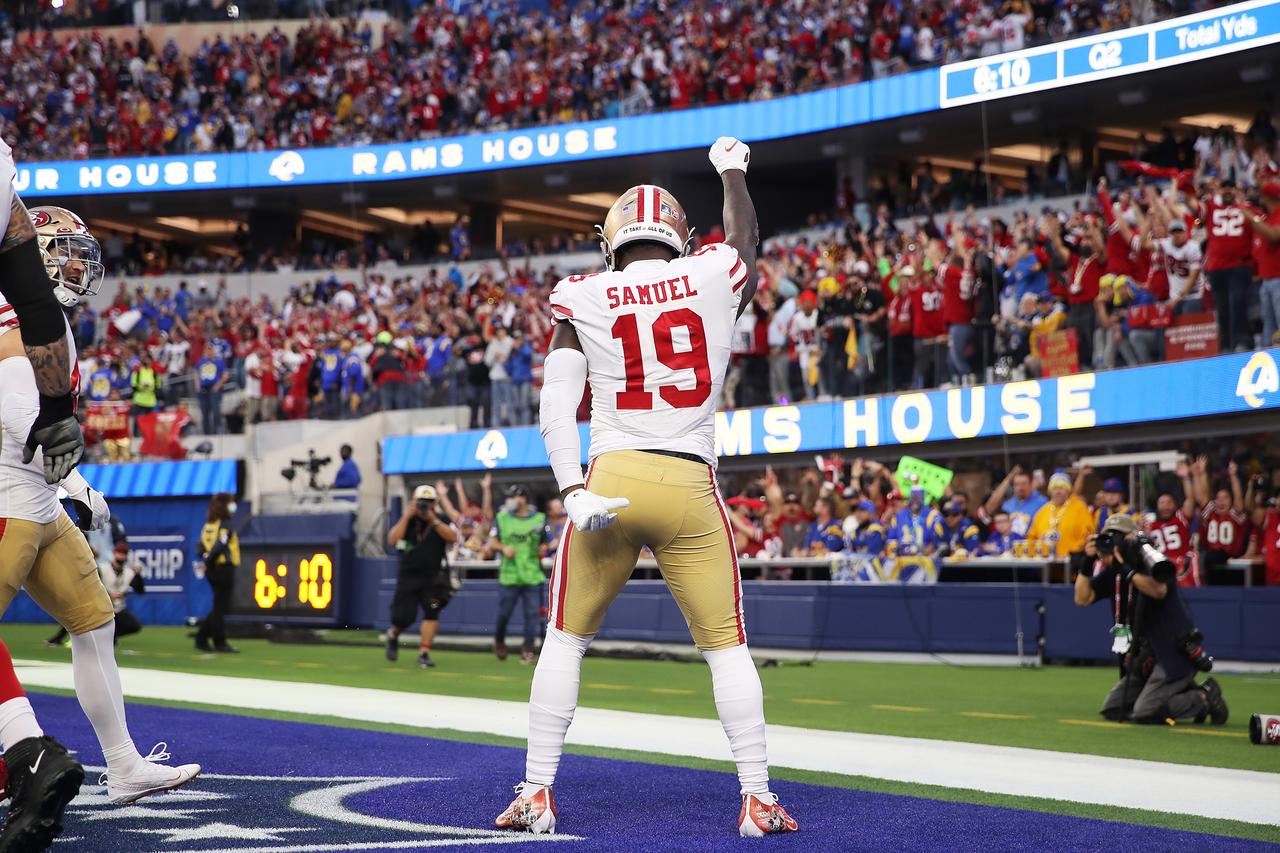
Despite being the half PPR app, Underdog Fantasy users are obsessed with WRs and hate RBs. This year’s early-round WRs are up a half round in ADP while all RBs are down nearly a full round in ADP. But is this justified? Are WRs actually overrated? How many WRs should we be drafting? These are the questions I’m trying to solve today by looking at case studies of last year’s best (and worst) WR picks.
2021 WR Data
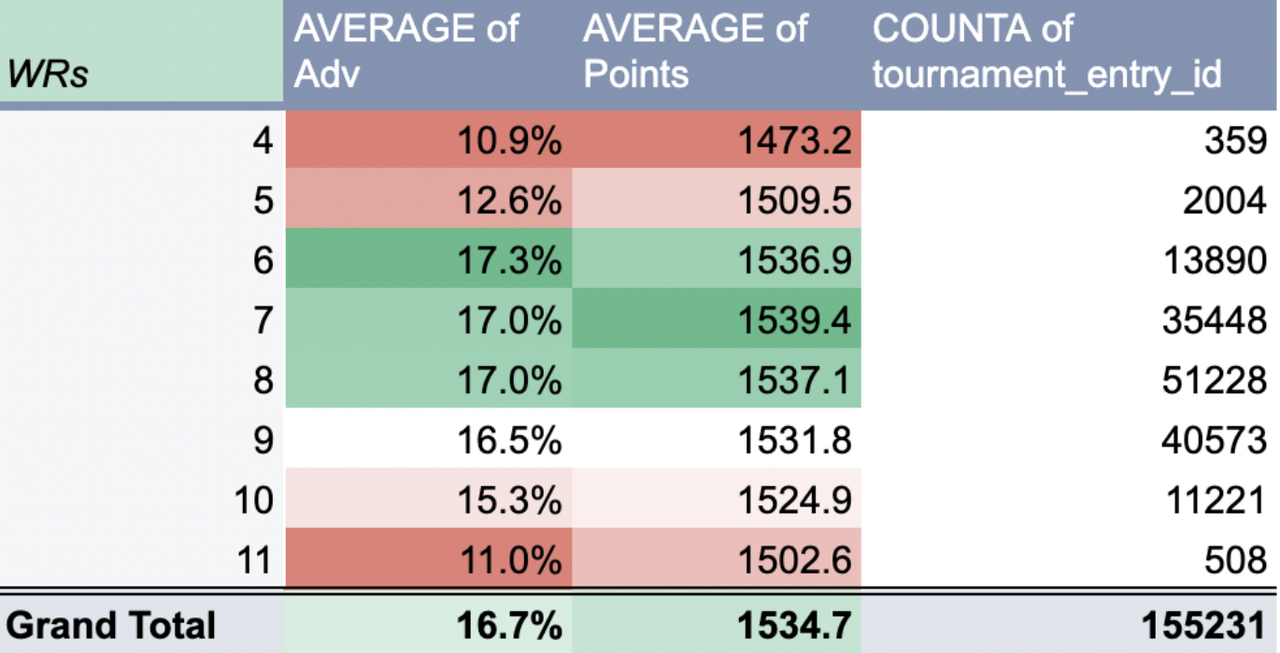
Full Best Ball Mania II data is helpful, but it’s not perfect either because it’s more or less one simulation. That’s why I tend to not look into historical TE data, as one Travis Kelce or George Kittle injury can impact TE win rates massively. At WR, however, I’m more willing to factor in the sample, especially when I’m looking at the total number of WRs instead of when to exactly draft a WR (though I wrote about the latter here). In other words, how much we can trust historical best ball data depends on what exactly we are studying.
The 2021 season was filled with drafters spending 8 or 9 picks on WRs, but I think there is more viability in aiming for 6 or 7 WRs total, especially in Zero RB builds. Read “More Radicalized Zero RB”. Last year, the highest advance rate went to teams with only 6 WRs at 17.3%, followed by teams with 7 or 8. And the highest scoring teams on average were teams with 7 WRs, followed by teams with 6 or 8. If last season’s simulation were to repeat, it’s clear that we should have at least 6 WRs and at most 9, though 6-8 was the sweet spot.
But I’m firmly on team case study when it comes to best ball research at this point. I’m trying to be as profitable as possible when my draft picks are elite. How do I build the best team possible when I hit the nuts with Cooper Kupp in Round 4, Deebo Samuel in Round 8, and/or Amon-Ra St. Brown in Round 15? To find that out, we have to analyze case studies. Here we go.
Case Study SZN

These seven WRs were some of the best picks possible, especially Cooper Kupp and Deebo Samuel in the middle rounds. To maximize these Kupp and Samuel rosters, drafters were clearly best off sticking with 6 or 7 WRs total. Beyond that, their advance rates dropped 3ish percent because these two teams were filling a WR spot with them almost every single week. They were that good.
The next tier of top WRs (Davante Adams, Justin Jefferson, Elijah Moore, Christian Kirk, and Amon-Ra St. Brown) also had their highest-advancing team when they finished the draft with 6 WRs with 7 or 8 WRs trailing just behind. In general, we should expect a 4ish percent drop from peak advancement on stud WR teams when we take a 9th WR and a 7ish percent drop from peak advancement on stud WR teams when we take a 10th WR. And I’m not even including 11th WRs because those teams were so dusty.
My understanding of why drafters are taking so many WRs is because there will be injuries to WRs and we have to win that position. Let’s see how much adding a 9th or 10th WR helps teams that drafted an injured or stinky WR early.

While the advance rate drop off from having 6 WRs (9.0%) to 10 WRs (8.1%) is far less steep on these bad WR teams, the moral of the story is that adding that 9th and 10th WR isn’t going to save a bad early-round WR, and that roster spot is probably best allocated to a TE3, a RB6, or a QB3 depending on the build.
When To Draft WRs
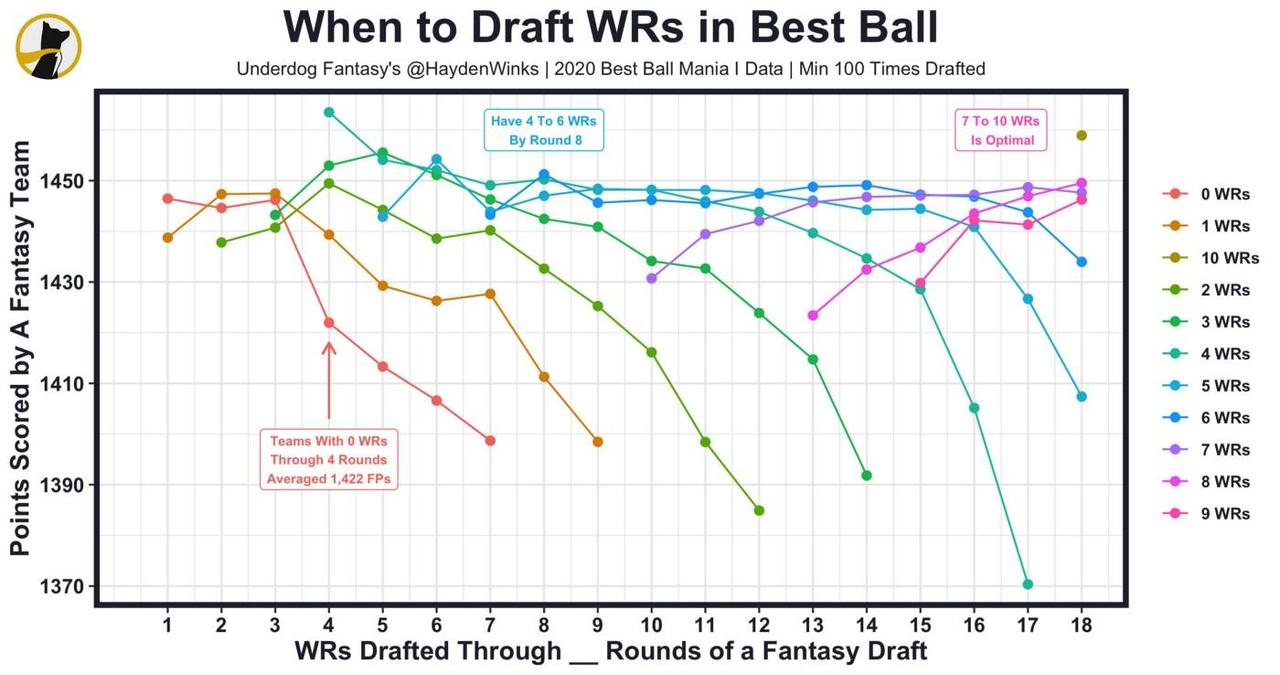
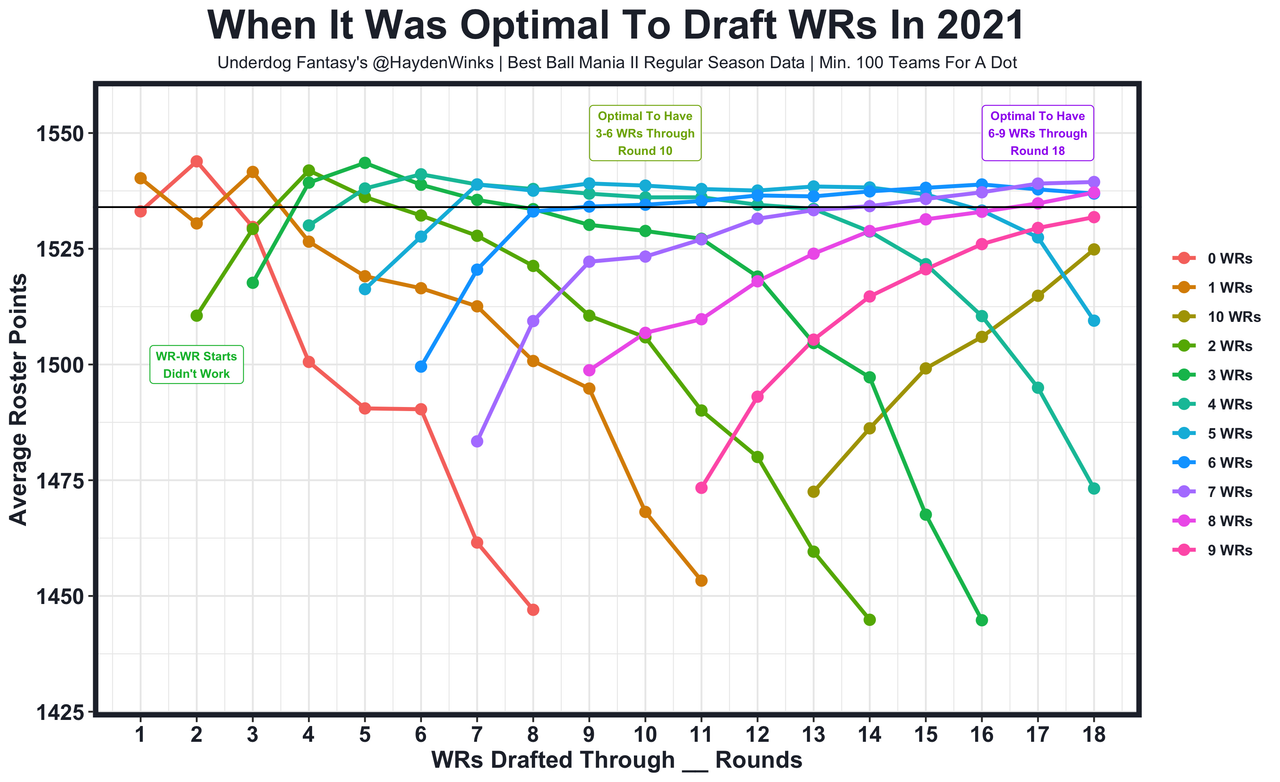
Okay. We’ve established that 6-8 WRs unlock a high upside, but when should those WRs be taken in general? Charts like these will be noisy in the first few rounds because of small samples, but I think the amount of WRs drafted will be pretty stable long-term in the middle and later rounds because the sample size grows. For example, I think having around 4-6 WRs will be optimal through Rounds 8-10 just about every single year. One year it might be best to start WR-WR. The next could be hammering the position in Rounds 3-6, but I think we’ll flatten out by Round 10 or so with 4-6 WRs being optimal just because the sample size of WRs grows to 50 or so by then and NFL passing yards have to go somewhere.
We do have to consider how extra games missed due to COVID-19 impacted Best Ball Mania I data. In 2020, it was generally optimal to have 7-10 WRs when there were more missed games. The other possible explanation for why fewer WRs worked better last year is because they cost more in terms of ADP. We have to have good WRs to win all the money, but if the entire WR pool costs too much then we have to pick our battles in terms of how many WRs were taking. This year, early-round WRs cost more than normal:
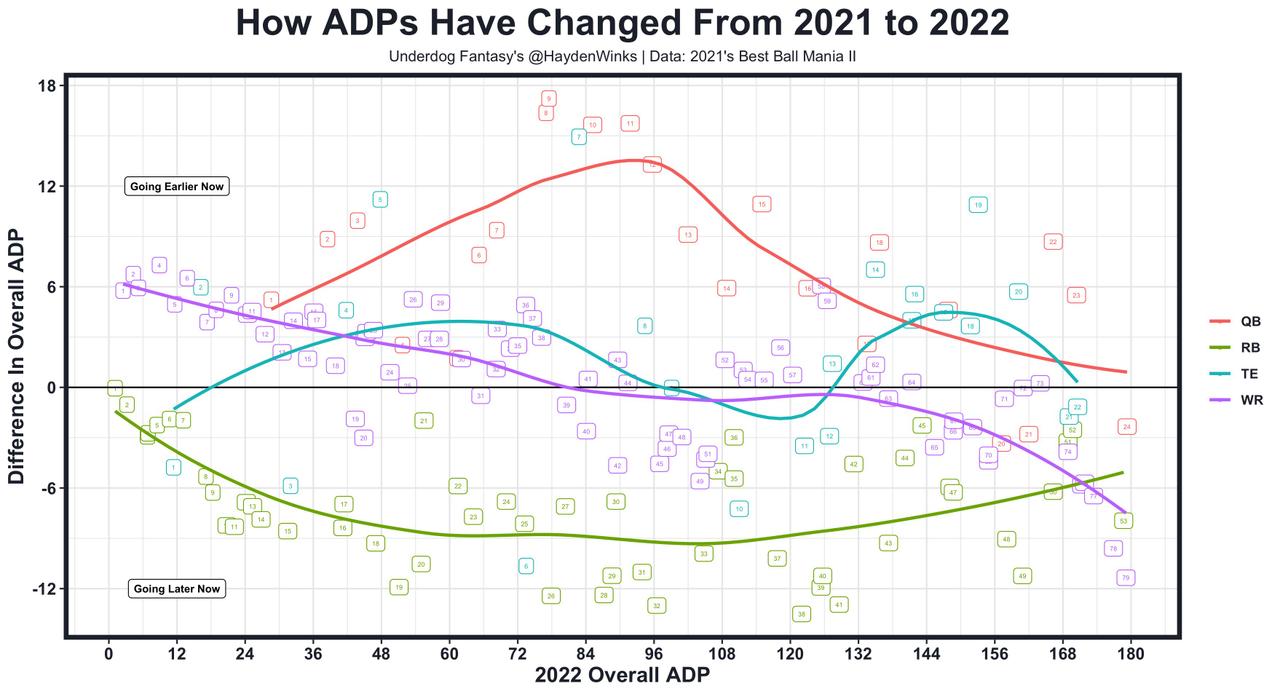
Conclusion
We need to have good WRs to advance in best ball tournaments, and we definitely need massive weeks from our WRs in the playoffs to win Best Ball Mania's $2 million grand prize. But just how much do we need to allocate to the position to have that upside?
Last year, it was more unique and more profitable to only draft 6-8 WRs compared to the consensus roster construction of 8 or 9 WRs. Betting on the WRs we are drafting in the first 10 rounds unlocks a higher ceiling, and there's little to no benefit of adding a 10th WR even on teams that drafted a WR bust early on. Just like we do at QB, RB, and TE, it's time to start betting on our early-round WRs by stopping at 6-8 WRs total. Of course, there are times to draft a 9th WR (when we go RB-heavy early), but with WR price tags continuing to climb, we need to consider just how much we're allocating to the position. We'll talk about this more on Thursday's WR Rankings Show.
Of course, this study was largely focused on advanced rates, so I am open to any research or ideas on why a 9th WR would help more than a 6th RB or 3rd TE particularly in the best ball playoffs. Let me know if you have anything on that.